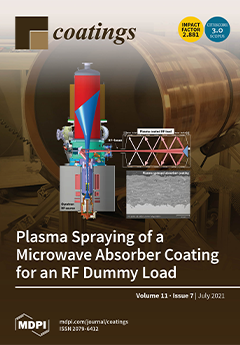Nanoparticles have long been known and their biomedical potent activities have proven that these can provide an alternative to other drugs. In the current study, copper oxide, nickel oxide and copper/nickel hybrid NPs were biosynthesized by using
Curcuma longa root extracts as a reducing and capping agent, followed by characterization via UV-spectroscopy, Fourier transformed infrared spectroscopy (FTIR), energy dispersive X-ray (EDX), powder X-ray diffraction (XRD), scanning electron microscopy (SEM), transmission electron microscopy (TEM), thermo galvanometric analysis (TGA), and band gap. FTIR spectroscopy shows the availability of various functional groups and biomolecules such as carbohydrate, protein, polysaccharides, etc. The EDX peak confirmed that the elemental nickel and copper were present in large quantity in the analyzed sample. Scanning electron micrographs showed that the synthesized CuO-NPs and NiO-NPs were polyhedral uniform and homogeneous in morphology, while the copper/nickel hybrid NPs were well dispersed, spherical in shape, and uniform in size. TEM micrographs of CuO-NPs had 27.72 nm, NiO had 23.13 nm and, for their hybrid, the size was 17.38 nm, which was confirmed respectively. The CuO and NiO NPs possessed spherical- to multi-headed shapes, while their hybrid showed a complete spherical shape, small size, and polydispersed NPs. The XRD spectra revealed that the average particle size for CuO, NiO, and hybrid were 29.7 nm, 28 nm and 27 nm, respectively. Maximum anti-diabetic inhibition of (52.35 ± 0.76: CuO-NPs, 68.1 ± 0.93: NiO-NPs and 74.23 ± 0.42: Cu + Ni hybrids) for α-amylase and (39.25 ± 0.18 CuO-NPs, 52.35 ± 1.32: NiO-NPs and 62.32 ± 0.48: Cu + Ni hybrids) for α-glucosidase were calculated, respectively, at 400 µg/mL. The maximum antioxidants capacity was observed as 65.1 ± 0.83 μgAAE/mg for Cu-Ni hybrids, 58.39 ± 0.62 μgAAE/mg for NiO-NPs, and 52.2 ± 0.31 μgAAE/mg for CuO-NPs, respectively, at 400 μg/mL. The highest antibacterial activity of biosynthesized NPs was observed against
P. aeuroginosa (28 ± 1.22) and
P. vulgaris (25 ± 1.73) for Cu + Ni hybrids, respectively. Furthermore, the antibiotics were coated with NPs, and activity was noted. Significant anti-leishmanial activity of 60.5 ± 0.53 and 68.4 ± 0.59 for Cu + Ni hybrids; 53.2 ± 0.48 and 61.2 ± 0.44 for NiO-NPs; 49.1 ± 0.39 and 56.2 ± 0.45 for CuO-NPs at 400 μg/mL were recorded for promastigote and amastigotes, respectively. The biosynthesized NPs also showed significant anti-cancerous potential against HepG2 cell lines. It was concluded from the study that NPs are potential agents to be used as an alternative to antimicrobial agents.
Full article





